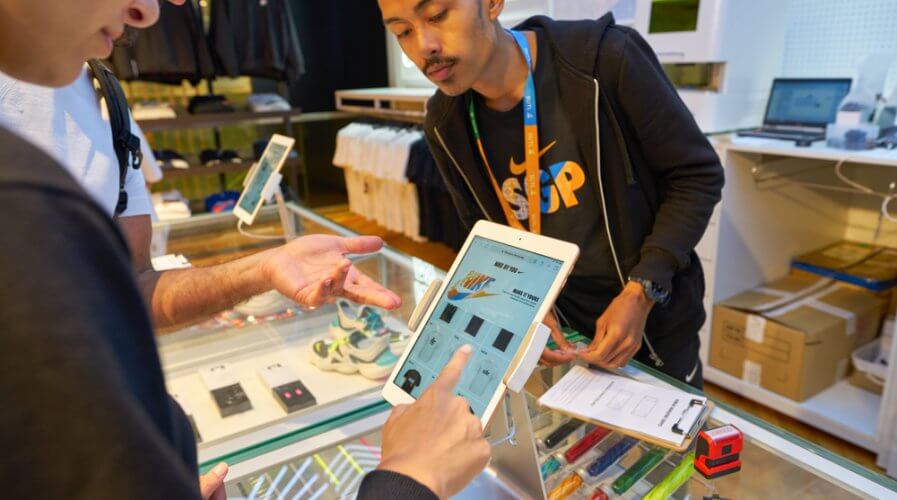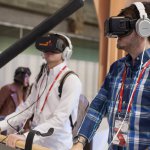
Nike’s new solution helps solve a massive problem in the sports shoe market. Source: Shutterstock
Nike finds new customer-driven use case for AR technology
WHEN digital innovations are focused on helping rid customers of their pain-points, they’re massively successful. Nike seems to be learning this lesson as a result of its latest announcement.
The company recently launched a new feature that allows customers to find the right shoe size for them using augmented reality on their mobile devices via the Nike app.
Dubbed Nike Fit, the feature is effectively a scanning solution that uses a combination of computer vision, data science, machine learning, artificial intelligence, and recommendation algorithms to measure the full shape of both feet, allowing customers to find the right size for depending on the Nike shoe style.
Nike’s app collects 13 data points from the smartphone’s camera to map the foot morphology of both feet, and can be stored in the app to help with in-store shopping as well as when shopping online.
The feature might sound petty at first, even an attempt to simply make a headline by showcasing the company’s use of new technology.
However, the company decided to invest in this feature to help customers who find it hard to buy the right shoe size. With online shopping picking up, the problem definitely gets more complicated.
According to Nike’s data, about 60 percent of people at any given time are walking around in the wrong size shoe and half a million people complain about purchasing the wrong shoe size a year in the US and Canada alone.
While Nike’s use of AR is quite interesting, there’s another sports shoemaker in the market that has created a similar buzz with the technology — albeit without as much utility.
Puma has recently launched a new line of shoes and a complementary app PUMA LQD CELL Origin AR. The company claims that the shoe is one of the first in the world that allows users to scan the futuristic-looking silhouette to get filters and add fun effects to pictures and videos of the shoe.
The app also offers LQDASH, an augmented reality running game, allowing users to compete in a digital world while taking strides on a physical race track.
While Puma’s offering doesn’t sound nearly as useful as Nike’s AR solution, it definitely is much more exciting to customers in today’s world where creating buzz on social media is a priority.
Using the new Origin AR shoes from Puma, customers can add an extra bit of excitement to their lives.
What’s most interesting about this project is the company’s dive into merging the digital and real worlds with its LQDASH game.
“The person who wears Puma is always hunting for the newest, coolest bit of tech, so we designed the LQD CELL Origin AR to reflect that passion,” Puma Global Head of Running and Training Marketing Matias Infante told media.
“From the outset, we knew that we had to do more than just create something that looked amazing on-foot; we also had to make it interactive and playful.”
Since the age of Nintendo Wii devices that attempted to give users (players) a bit of interactivity and movement, this new AR solution by Puma could eventually break silos to help the company pioneer more digital innovations among individuals that seek an active lifestyle but expect to make an impact in the digital world as well.
While there’s no clear direction with regards to what customers can expect from sport shoemakers in the future, it’s interesting to know that leading players in the market are actively exploring innovative and exciting use cases for AR and VR.
READ MORE
- Aviation giant Airbus turns to chatbots to engage top talent
- In the digital economy, MoneyGram focuses on getting the basics right
- How FedEx uses technology to delight customers in the digital era
- FedEx Express/Ground collaboration will improve last-mile delivery
- Growth is fabulous: Why Foodpanda’s app and team are growing rapidly






